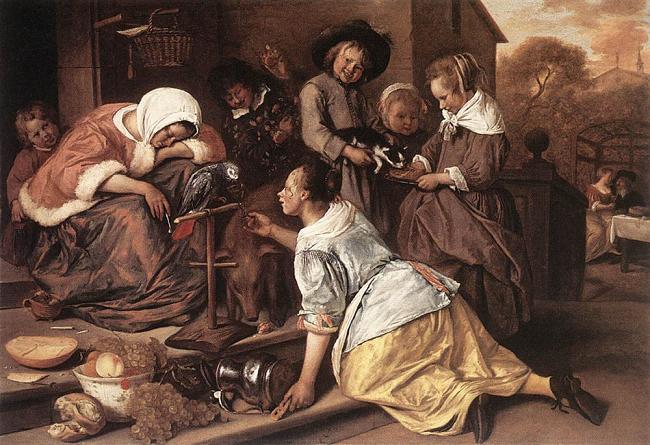With the festive season approaching its traditionally bibulous climax, this week’s aptly cautionary choice of picture is Jan Steen’s The Effects of Intemperance. This vivid sermon on the dangers of drinking and smoking too much was painted in the first half of the 1660s, when the artist was living and working in Haarlem. These days, it is to be found in the National Gallery in London.
The anti-heroine of the picture, a neglectful drunken mother, is shown slumped on the steps before her house, oblivious both to her own shame and to the misdeeds of her children. Her elegant clothes, which include an extremely expensive fur-trimmed jacket, indicate that she is not merely well-to-do but positively wealthy, which only makes her dereliction of her domestic duties all the more reprehensible. All around her Steen has assembled the evidence of her guilt, a cornucopia of incriminating details like so many exhibits in a court case: an overturned wine flagon; some nibbled-at bread and untouched fruit; and a brood of unsupervised children, the youngest of whom is slyly filching his insensible parent’s purse.
That mischievous pick-pocket probably embodies the Dutch saying that “opportunity makes the thief”. Clues to the significance of several other details are likewise to be found in the popular proverbs and books of moralised emblems that circulated in seventeenth-century Holland. The parrot, offered a glass of wine by the eldest child, symbolises blind emulation and indicates that the sins of the mother will be passed on to her offspring. The flushed face of the kneeling girl and her air of unsteadiness suggest that she has already boozily followed maternal example. Behind, a boy throws roses in the direction of the pig that is snuffling hopefully in the direction of the food. The detail is puzzling until you know...


